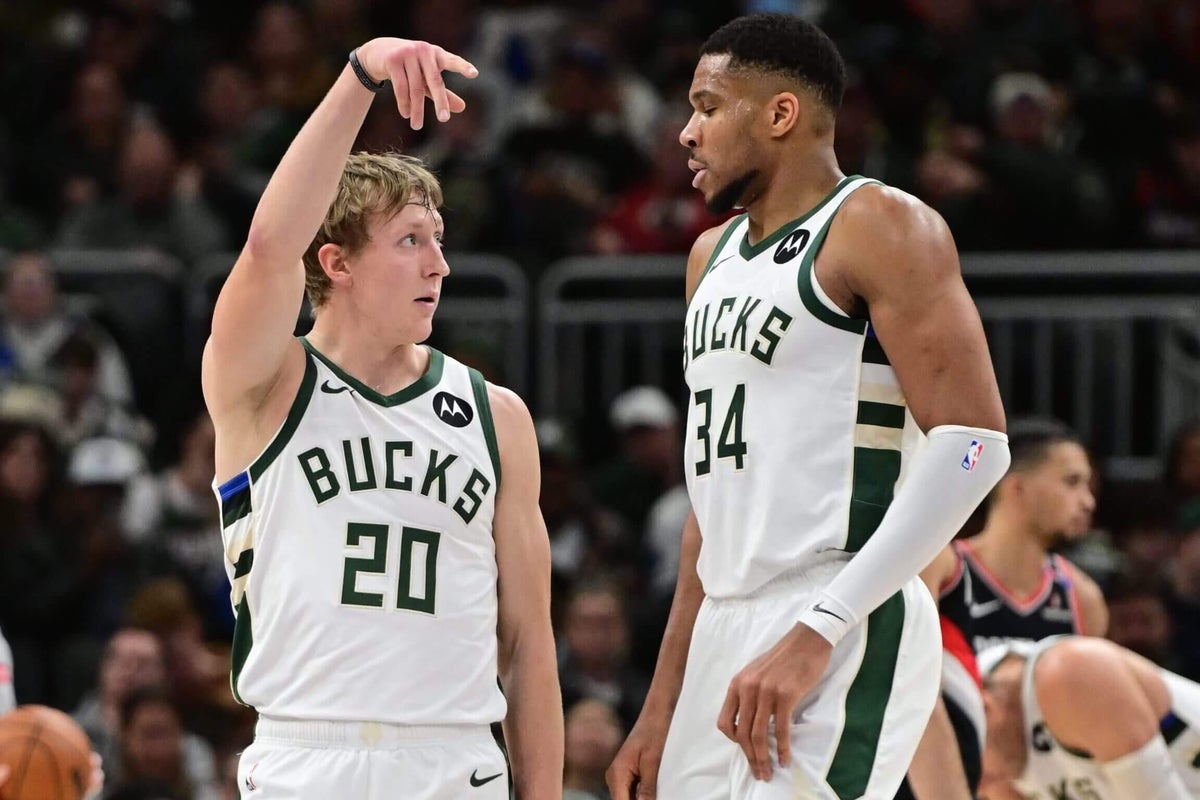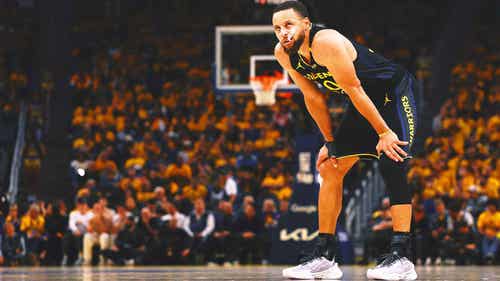

It’s been over a week since the Indiana Pacers knocked the Milwaukee Bucks out of the playoffs in the first round. For a third straight season, the Bucks’ offseason begins much sooner than the organization anticipated.
Milwaukee’s ending left other NBA front offices hoping this would be the offseason where their dreams of trading for Giannis Antetokounmpo might finally come true. But while the Bucks will need to think about Antetokounmpo for everything they do this offseason, that is no different than any other moment in any season or offseason since the Greek forward first blossomed into an All-Star.
Advertisement
While Antetokounmpo’s thoughts and desires require plenty of attention, there is also a full roster of guaranteed contracts and free agents, along with some draft assets, worth examining to see how this offseason may unfold.
So, with that, let’s set the stage for the Bucks’ offseason by looking at the roster before Bucks general manager Jon Horst gets a chance to revamp it heading into next season.
Salary cap overview
Over the last few seasons, this space has typically explained how far the Bucks are over the salary cap and what they could do to avoid going over the punitive second apron. They still don’t have wide-open cap space to use freely on supermax contracts and high-priced free agents. Yet, the Bucks will have more opportunities and avenues to improve through free agency rather than only being able to re-sign their own players and grab others on minimum contracts.
Heading into next season, the Bucks have four players with guaranteed contracts: Giannis Antetokounmpo ($54,126,380), Damian Lillard ($54,126,380), Kyle Kuzma ($22,410,605) and Tyler Smith ($1,955,377). Those four contracts add up to $132,618,742, or roughly 86 percent of the projected salary cap of $154.6 million for the 2025-26 season. The Bucks will need to sign more players, but they would have roughly $55 million to fill out the rest of the roster and still stay under the luxury tax line of $187.9 million.
| Salary (in millions) | |
|---|---|
|
Bucks’ Guaranteed Contracts |
$132.60 |
|
Salary Cap |
$154.60 |
|
Luxury Tax |
$187.90 |
|
First Apron |
$195.90 |
|
Second Apron |
$207.80 |
Along with the four players on guaranteed contracts, the Bucks also have:
- Three players with player options for next season: Bobby Portis ($13,445,754), Pat Connaughton ($9,423,869), Kevin Porter Jr. ($2,546,675)
- Three players with non-guaranteed contracts for next season: AJ Green ($2,301,587), Andre Jackson Jr. ($2,221,677), Chris Livingston ($2,221,677)
- One player that will be a restricted free agent: Ryan Rollins
The Bucks will have various rights on the remaining four players on the 15-man NBA roster, so they will have some tools at their disposal to re-sign them, but Brook Lopez, Taurean Prince, Gary Trent Jr. and Jericho Sims will be unrestricted free agents this offseason.
In previous seasons, this would have been a rundown of all the things the Bucks would be unable to do because they were approaching or exceeding both aprons. This offseason, the Bucks will have more avenues for team building. While working through player options and guaranteeing non-guaranteed contracts will eliminate any chance the Bucks have at actual cap space, Horst will still likely be able to:
- Use the $14.1 million nontaxpayer mid-level exception, which can be split among multiple players
- Use the $5.1 million bi-annual exception (as long as the Bucks don’t use cap room to sign any players)
- Use the trade exception — worth roughly $7.2 million — created in trading Khris Middleton to the Washington Wizards
- Aggregate contracts in a trade
- Acquire a player in a sign-and-trade
- Take more money back in contracts than they send out in a trade
It’s worth noting that using the nontaxpayer mid-level exception or the bi-annual exception would hard cap the Bucks at the first apron next season. Also, for those curious about using cap space on free agents, even if the Bucks waive their non-guaranteed contracts and renounce all their cap holds and the three players with options decline their options, Milwaukee cannot create cap space larger than the non-taxpayer midlevel exception.
Advertisement
While there are still limitations on what he can do overall, Horst will have the chance to get far more creative this offseason and try some different things to fill out the roster around an injury — Lillard’s torn left Achilles — that will be quite disruptive to team building.
(Note: For those asking about a cap exception for Lillard’s injury, disabled player exceptions are only granted when a team applies for the exception with the league and an NBA-designated physician or a Fitness-to-Play panel determines that the player in question is “substantially more likely than not” to be unable to play through the following June 15. That doesn’t seem likely to apply to Lillard’s situation.)
Roster needs
After another disappointing end to their season, this should come as no surprise, but the Bucks head into this offseason with some big needs.
With Lillard out for much of next season, the Bucks will need to see if they can add more scoring and creation at their guard spots. Some of this may be created internally if Porter — who averaged 16.9 points, 5.6 rebounds and 5.1 assists in 26.9 minutes per game during the Bucks’ eight-game win streak to close out the regular season — decides to return to Milwaukee, either through accepting his player option or signing a new contract, and improves in a second season playing alongside Antetokounmpo.
Even if Porter returns and improves, though, the Bucks will need to find more players who can create pressure on the rim or break down defenders off the dribble. Both Trent and Green hit big shots in Game 5 against the Pacers, but nearly the entire Bucks’ offensive attack relied upon Antetokounmpo controlling the ball and drawing help defenders. If the Bucks have Antetokounmpo take on the point guard adjacent role he played at the end of the season again next season, finding ways to lessen his playmaking workload will be essential.
Advertisement
As always, the Bucks will need better perimeter defenders. This is just the reality of the NBA. Whether it is defending guards or playmaking wings, the NBA has grown to a point where every team has so many skilled players that rim protectors can no longer simply clean up the mess. While this has been listed as an area of need in some form or fashion during the offseason since we’ve been doing these offseason previews at The Athletic, this Bucks team specifically needs to improve in this regard.
All season long, the Bucks struggled at the point of attack defensively. There were times when they did a better job against the league’s top scoring threats on the perimeter — when Jackson was in the rotation and when the Bucks went with their bench unit in the starting lineup against the Pacers stand out as examples — but overall, it was a huge problem for the Bucks. If the Bucks are going to put themselves in a position to compete with the Cavaliers, Celtics and Knicks going forward, developing more on-ball defensive talent should be a priority next season.
The Bucks’ final needs will depend on which of their free agents they choose to retain.
If they choose to guarantee Green’s contract and re-sign Trent, 3-point shooting may not be as significant a need. But if the goal is building an offense solely around Antetokounmpo’s ballhandling and gravity, the Bucks will need to maximize their 3-point shooting at every other roster spot anyway. If they choose to retain either Lopez or Portis, they will need to find more size to ensure they are not putting Antetokounmpo through too much of a physical toll on the defensive end.
2025 NBA Draft
Currently, the Bucks have the rights to one draft pick in the upcoming draft.
As part of the Middleton trade, the Bucks obtained the second-most favorable of the Wizards’ second-round selections, which ended up being the No. 47 pick. The Bucks traded away their first-round selection in this year’s draft as part of the trade that brought Jrue Holiday in Nov. 2020 and they moved their 2025 second-round pick to the Cleveland Cavaliers, a trade done to remove the protections that had been placed on their 2022 first-round pick, which was then included in the Holiday trade.
Looking at future draft assets, the Bucks are pretty limited as well. To satisfy the Stepien Rule, which bars teams from not having first-round picks in consecutive seasons, the Bucks have the rights to first-round selections in 2026, 2028, and 2030, but those picks are tied up in swaps with other teams that will likely put those picks in the 20s. By getting under the second-apron, the Bucks opened up the possibility of trading either their 2031 first-round pick or 2032 first-round pick this offseason.
Along with the No. 47 pick in this year’s draft, the Bucks also hold the rights to a “fake” second-round pick in 2026 (top-55 protected from the Utah Jazz) and their 2031 and 2032 second-round picks.
(Photo of AJ Green and Giannis Antetokounmpo: Benny Sieu / Imagn Images)
This news was originally published on this post .








Be the first to leave a comment